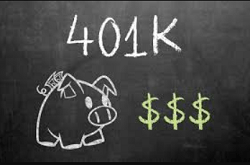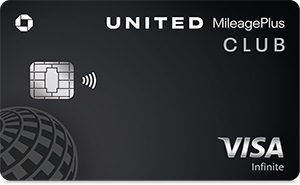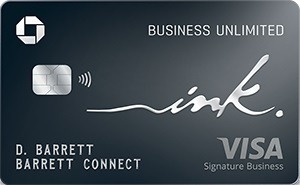 You may have heard of a 401(k) plan. You may have also heard of a Pension, but what’s the difference? Recent trends show the shift from traditional pension plans to the more defined 401(k) plan.
You may have heard of a 401(k) plan. You may have also heard of a Pension, but what’s the difference? Recent trends show the shift from traditional pension plans to the more defined 401(k) plan.
When choosing which plan you want to start with, it’s important to know the difference between the two and what each plan has to offer. There are two types of company sponsored retirement plans with significant differences for retirement savers.
These retirement income plans, a defined contribution plan and a defined benefits plan, are both retirement plans available through employers.
 The United ClubSM Infinite Card offers 90,000 bonus miles after you spend $5,000 on purchases in the first 3 months from account opening. You'll earn: • 4x miles on United® purchases • 2x miles on all other travel and dining • 1x mile on all other purchases. • Earn up to 10,000 Premier qualifying points per calendar year (25 PQP for every $500 you spend on purchases) This card does carry an annual fee of $525. However, you can get up to $120 Global Entry, TSA PreCheck or NEXUS fee credit. In addition, you'll get a savings of up to $360 per roundtrip (terms apply) by getting your first and second checked bags for free and Premier Access travel services! Member FDIC |
Basic Fundamentals of a Pension Plan
A pension plan offers a defined benefits plan that is based off of the length of employment and salary history. With pensions plans employers contributes to the plan while you are working. These plans guarantee retirement income. All the risk is placed on the plan sponsor. Despite their consistent decline in popularity among employees, they are a common example of a well defined benefit plan.
The formula that is used when deciding on your pension rate is based on the following:
- Your years of service with the company offering the pension
- Your age
- Your compensation
Most benefits are taxable when you begin to receive your income. It’s also good to keep in mind that the company can choose to discontinue your pension plan. Your history of working with the company will add up to that point in which they terminate your plan. In other words, when it comes time to receive your pension, you will receive all your benefits that add up to the point of termination. If you continue working for the company, your time spent there will no longer contribute to the company.
In the past, pensions have been mismanaged and were unable to pay out all their guaranteed benefits. If your pension is covered by the Pension Benefit Guaranty Corporation (PBGC) some benefits are protected for pension plan participants.

Basic Fundamentals of a 401(k)
A 401(k) is an example of one of the most well defined contributions plans that can most likely guarantee your retirement dream. The 401(k) plan places the burden of risk on the individual employee rather than the company.
401(k) plans offer the employee a chance to contribute up to $18,500 as of 2018, and those who are 50 years or older are given a $6,000 contribution bonus as a means to “catch up.” Contributing to the 401(k) plan cuts your income from any tax, meaning you could save hundreds to thousands of extra dollars every year.
If your company matches the amount you contribute, then consider it getting a bonus every time you reach your pay period. Try to contribute the company contribution maximum. This will help you save even more money.
Your money will continue to grow at its constant rate as it’s sheltered from any taxes.Roth 401(k)s allow you to contribute after-tax dollars that can grow to be tax-free after age 59 ½ as long as you’ve had the account for at least 5 years. Choosing whether it makes sense for you to receive the tax savings now or later is a big part of the pre-tax vs. Roth 401(k) decision.
What if you Don’t Have a Pension Plan?
Pension plans guarantee an income which comes to an advantage compared to a 401(k).
However, because of the downfall of companies offering pension plans, most people stick with a 401(k) plan, however that places the weight of your retirement completely on your shoulders.
 | BMO Bank Checking: Open a new BMO Smart Money Checking Account and get a $400 cash bonus* when you have a total of at least $4,000 in qualifying direct deposits within the first 90 days. Learn More---BMO Checking Review *Conditions Apply. Accounts are subject to approval and available in the U.S. by BMO Bank N.A. Member FDIC. $4,000 in qualifying direct deposits within 90 days of account opening. |
 | Chase Ink Business Unlimited® Credit Card: New cardholders can enjoy a welcome offer of $750 bonus cash back after you spend $6,000 on purchases in the first 3 months from account opening. Click here to learn how to apply--- Review |
Bottom Line
A pension plan may seem more appealing than a 401(k), but if planned correctly and well balanced, you can still get your dream retirement through a well thought out 401(k) plan.
If you find these posts informative and would like to know any other banking tips and tools, be sure to check out our other Bank Guides! We also have posts on the best Bank Bonuses, Saving Rates and Credit Card Bonuses!




Leave a Reply